By Gina Castro
Mardi Gras has been celebrated in Pensacola since Spain colonized the Gulf Coast. Although the celebrations fizzled out several times throughout the years and, at one point, for 50 years straight, Pensacola has always welcomed a good Mardi Gras celebration. Unfortunately, due to COVID-19, Mardi Gras looks different this year. The Krewe of Lafitte Parade and the Pensacola Beach Mardi Gras Parade are cancelled. The Mardi Gras Kick-Off Celebration is still set for Jan. 8. The event will be held at City of Pensacola Roger Scott Athletic Complex with a maximum capacity of 3,000 and face masks are required. Pensacola Mardi Gras is also working to implement contactless transactions through RFID wristbands.
Even though there are a few Mardi Gras celebrations still happening around the city, many people are choosing to commemorate the day from home. Downtown Crowd rounded up some interesting history of Pensacola’s Mardi Gras in years past. So, grab yourself a slice of King Cake and laissez les bon temps rouler (Let the good times roll).
The First Priscus King
The date Pensacola named its first King of the Carnival is still not 100 percent clear. Multiple articles from the Pensacola Gazette in the Historic Trust suggest that Pensacola had been celebrating Mardi Gras since the early 19th century while other articles suggest that Pensacola has been celebrating since Spain arrived here. The Historic Trust dates the photograph of Pensacola’s first King Priscus, A. C. Blount, in 1900.
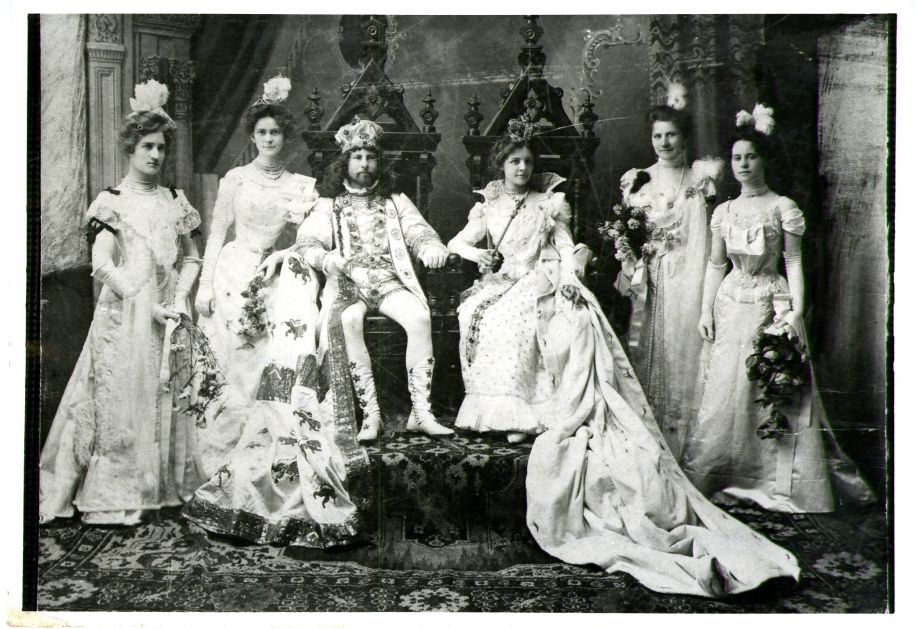
While Pensapedia and the President of Pensacola Mardi Gras believe A.C. Blount was named king in 1874. Although the official year of the first King of the Pensacola Carnival is unclear, the origin of the name Priscus is clear. Priscus is the name of Rome’s fifth king: Lucius Tarquinius Priscus. Priscus is known for having a good time. He is said to have established the first circus. Priscus was also known for his lavish wardrobe. He wore a purple robe with a gold crown on his head. Perhaps he is why purple and gold are the prominent colors in Mardi Gras.
The Best Mardi Gras in History
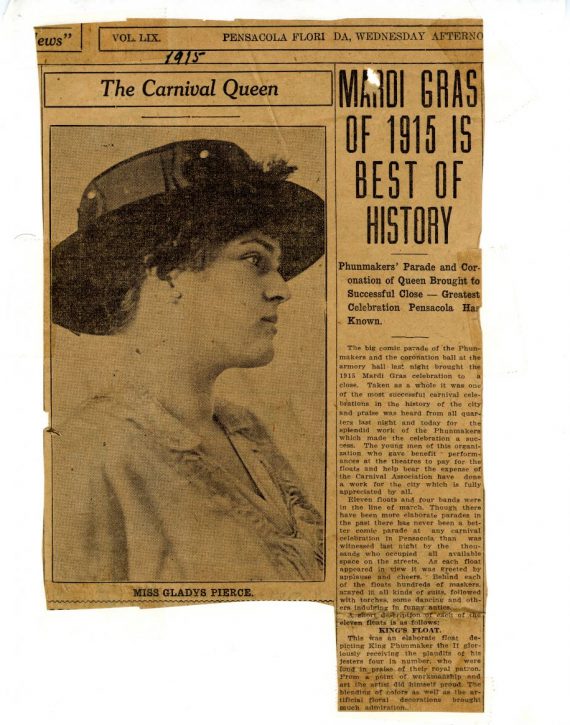
If you were to ask pensacolians from the 20th century which year Mardi Gras was the best, apparently they would say 1915. The Feb. 17, 1915 headline called the event “The Best in History.” The moment that turned this parade up a notch was when King Priscus XVI made quite the entrance. Instead of arriving at the parade in a regular old car, B.S. Hancock took to the sky. He flew an airplane above a crowd of thousands, but Hancock wasn’t the only one turning heads. Gladys Pierce was a shocking choice for queen.
The Pensacola Gazette said “She was not a parlor queen at all.” The article states that Pierce seemed like a peculiar pick because she was a woman of business. Past queens had been ones of beauty who stayed home. Pierce on the other hand went to college in Baltimore and was even a part of the Army. The article named her “the first queen of a new era in Pensacola.”
The Mardi Gras Hiatus
Although there were numerous private parties celebrating Mardi Gras, Pensacola’s official parades were skipped several times throughout the decades. In 1919, the Pensacola Journal reported that due to the world war, Pensacola skipped Mardi Gras. Mardi Gras wasn’t celebrated again, officially, until 1922. The spike in the need to celebrate again was probably a result of the Florida Land Boom, which caused many people to migrate to Florida, and the exciting Flapper era. The festivities fizzled out again after 1930 due to the Great Depression. Fortunately, that final Mardi Gras was filmed by the naval air station’s school of photography. The Saenger Theatre showed the film for several years. Mardi Gras took a 50 year hiatus, but it was brought back to life in 1977.
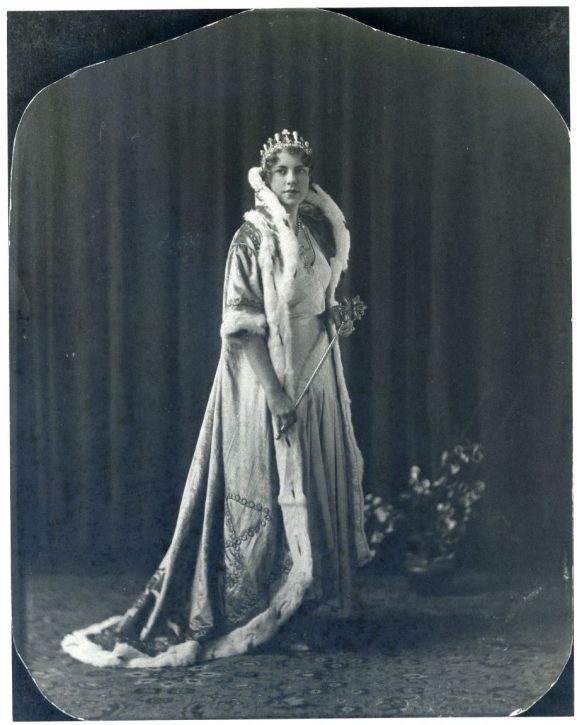
Mardi Gras Returns
1977 shaped up to be a spectacular year for Mardi Gras. After 50 years of silence, the Pensacola Chamber of Commerce formed a Mardi Gras Committee. The committee rounded up eight hard-kicking bands, bluegrass groups, the UWF Black Gospel Singers and many other musical groups. Pensacolians flooded the streets to see the parade on Palafox Street.
The Creation of One of the Oldest Pensacola Krewes
If there is a group Pensacola could credit for keeping public Mardi Gras festivities alive in the city, it’s the Krewe of Lafitte. This krewe was founded July 15, 1954. An article published May 15, 1957, states that the krewe was originally founded to host a parade and ball during the Fiesta of Five Flags week. As the number of krewe members grew, the Krewe of Lafitt’s celebrations got larger. They named their first king and queen, Harrison Wells J. and Mrs. Owen M. Ward, June 8, 1955. The krewe kicked off their Mardi Gras festivities with an invitation only cocktail party at Hotel San Carlos. Then the krewe hosted an after-dark parade. The krewe’s May 15, 1957 festivities included a parade of nine floats, which each cost $1,400, 10 bands, horses from the Mobile Mardi Gras and a 21-gun salute. The krewe closed out the night with an invitational ball. Today, the Krewe of Lafitte is the largest all male krewe in the Florida panhandle, and the krewe hosts the Krewe of Lafitte Parade each year. The krewe hosts several other parades and balls throughout the year, too.
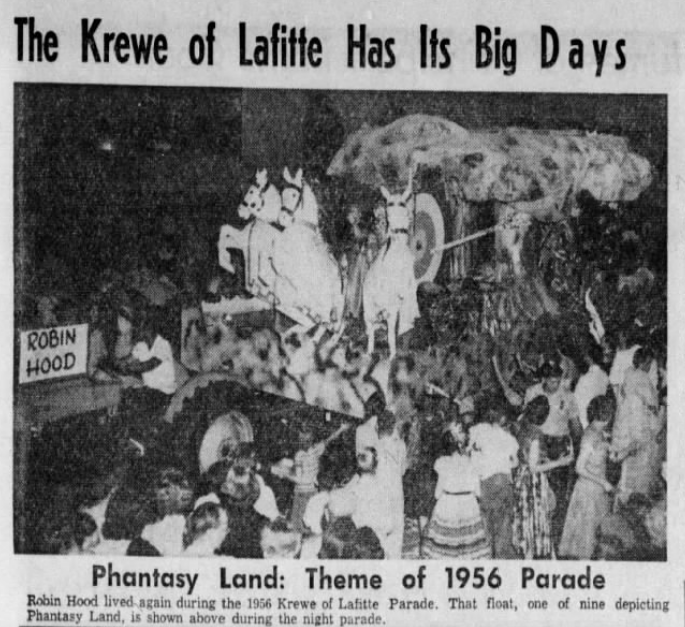
First African-American Krewe Forms
The Krewe of African Kings was established in 1990. The krewe was formed by Martin Lewis and male members of the St. Joseph Catholic Church in downtown Pensacola. The African Kings participate in the Krewe of Lafitte Parade, Mardi Gras Grand Parade and Fat Tuesday Parade in New Orleans, to name a few. They also host an invitational black-tie ball each year where they select the year’s king. The queen is a guest who is randomly chosen at the ball through the cutting of the Queen’s Cake (King’s Cake). The African Kings also participate in the Krewe of African Queens annual Ball. Krewe of African Queens hosted its first ball in January 2003, and its Annual Ball is considered one of the top social events of the year in Pensacola.
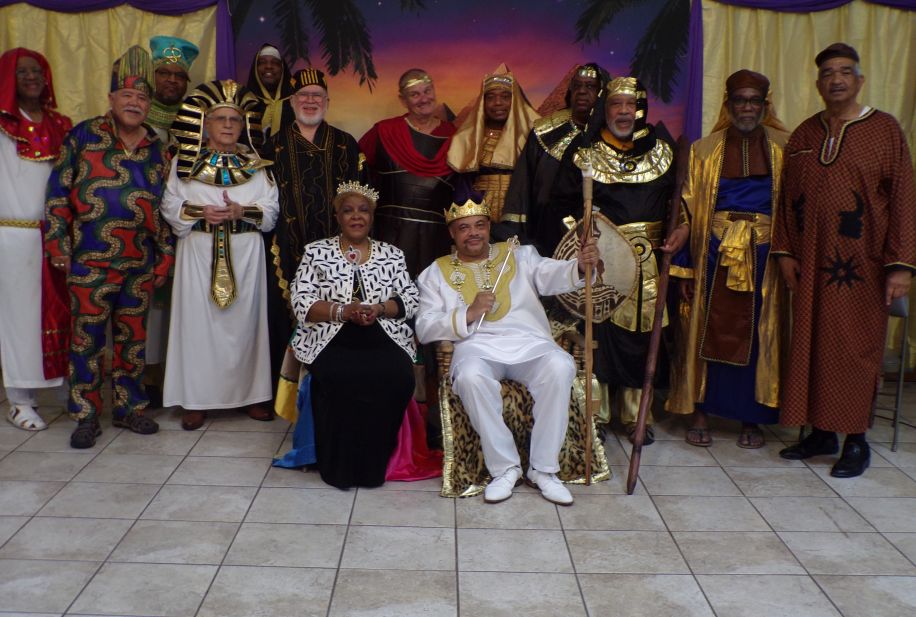
Pensacola Mardi Gras Continues to Grow
Pensacola Mardi Gras, the organization, was handed down the city’s Mardi Gras celebration from Mardi Gras of Pensacola, which was run by David and Bonnie McDonald. The McDonalds hosted the Grand Pensacola Mardi Gras Parade and the Fat Tuesday pub crawl called the Priscus Procession for about 25 years. Danny Zimmern, who is now the Pensacola Mardi Gras President, along with several other volunteers had been lining up the floats for the parade for a couple of years. In 2000, the McDonalds passed the grand parade to Fiesta Pensacola. Fat Tuesday didn’t have an event that year. Zimmern and his volunteers helped Fiesta manage the parade by lining up the floats. After hosting the parade that year, Fiesta decided to pass it on to Zimmern. Zimmern and his volunteers became Pensacola Mardi Gras.
Although Pensacola Mardi Gras’ first year in 2001 was successful, it had its challenges. Zimmern said that the organization lost $15,000 that year. “We didn’t know what we were doing yet, so with that loss, we went from being interested to being invested,” Zimmern said. “We took it all on at full force the next year. We decided that we had to either get smaller or bigger, and we didn’t want to get smaller.”
Zimmern said that they focused on growing the grand parade and Fat Tuesday since the Krewe of Lafitte Parade on Friday and the Pensacola Beach Mardi Gras Parade, hosted by the Krewe of Wrecks, on Sunday were each excellent events. In 2011, the Executive Director Amy Newmen, who is from Louisiana, came up with the idea to launch a kick-off event on the 12th day of Christmas, which is the official start date for Mardi Gras everywhere. Although the 12th day of Christmas is Jan. 6, Pensacola Mardi Gras chooses the closest Friday to the date. This year the kick-off is Jan. 8.
This year marks Pensacola Mardi Gras’ 20th year. Zimmern explained that Mardi Gras has certainly grown over the years. Last year, 15,000 people attended the kick-off event and 85,000 went to the grand parade. In just the three-day Mardi Gras weekend, a survey found that people spent more than $18 million. This year will be quite smaller due to COVID-19, but the years to follow are sure to be major hits once more.
Meet the Pensacola Parade People
The only store in Pensacola dedicated solely to parade supplies, Pensacola Parade People has been a part of Pensacola since 2012. Mother and daughter Terry and Audrey Preston have been a part of the Mardi Gras scene for decades. When Terry moved to Pensacola with her husband in 1978, they and Terry’s parents joined krewes in Pensacola. Audrey grew up eating moon pies and catching beads. Mardi Gras was the family’s favorite holiday. After the 2011 Pensacola Beach Mardi Gras Parade, Terry and Audrey realized that they were tired of having to drive out to nearby cities to purchase throws for their krewes, so they decided to open up Pensacola Parade People.
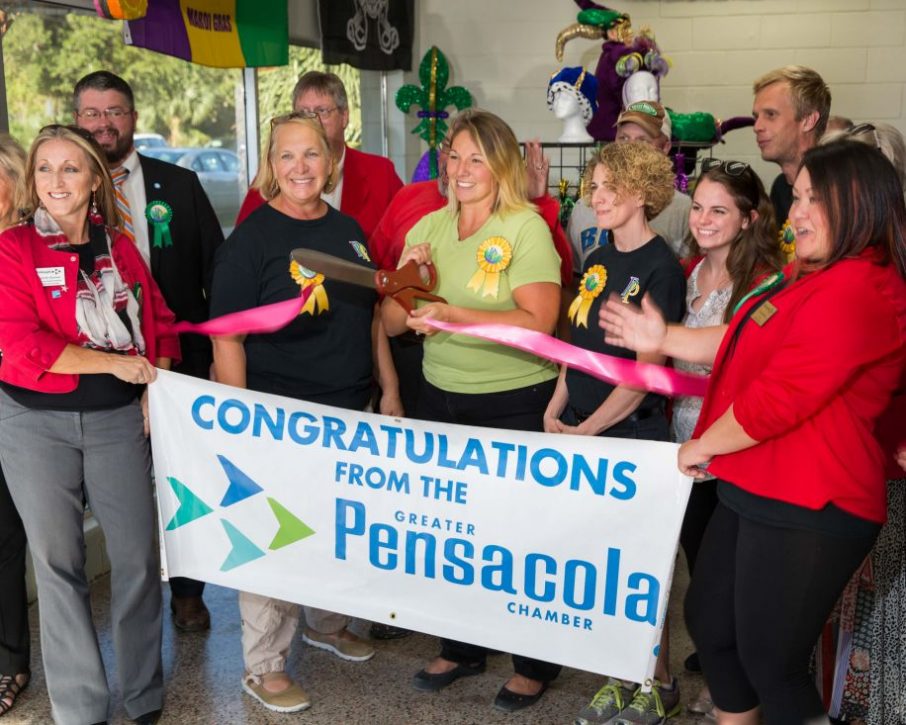
“People have been very supportive of our store here in Pensacola. Most of the krewes here make a point to shop with us because they want to support us,” Audrey said.
For Mardi Gras, Audrey and Terry estimate they sell about 3,000 to 5,000 cases of beads or around one million individual beads annually. But they don’t just sell products for Mardi Gras. They have products for all of Pensacola’s festivals, including Christmas and Fiesta parades. Visit paradepeople.com for all your parade needs.